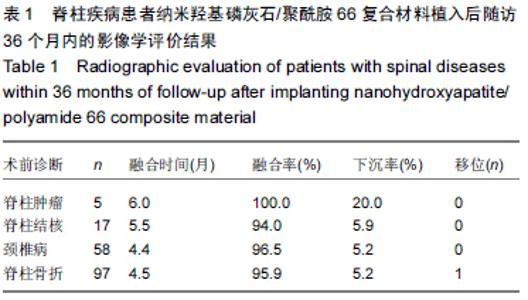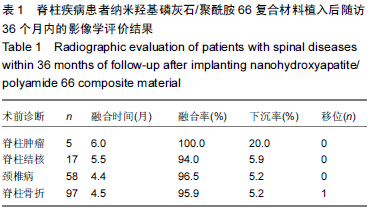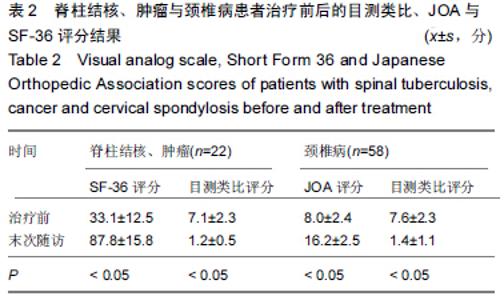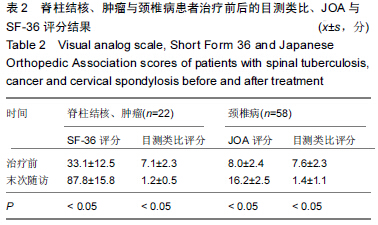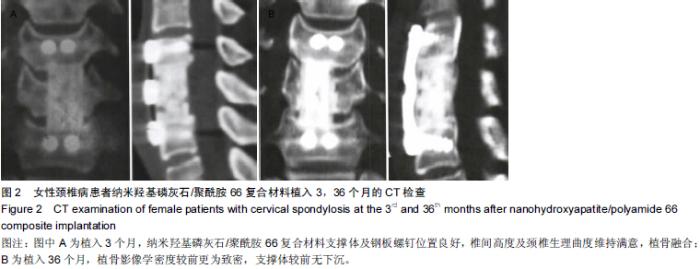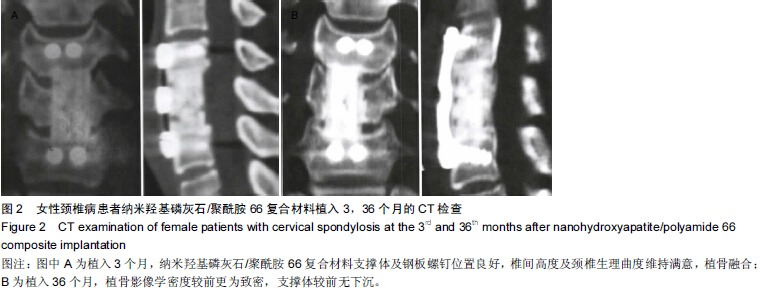|
[1] 蒋电明,权正学,欧云生,等.n-HA/PA66复合生物活性支撑材料在重建椎体结构中的初步临床应用[J].重庆医学,2007,36(11): 1010-1012.
[2] 蒋电明,权正学,欧云生,等.n-HA/PA66复合生物活性支撑材料在重建椎体结构中的初步临床应用[C].//2006中华骨科西部论坛论文汇编,2006:65-67.
[3] 朱美忠.纳米羟基磷灰石/聚酰胺66复合人工椎体的实验验研究及初步临床应用[D].重庆医科大学,2007.
[4] 黄伟,安洪,蒋电明,等.纳米羟基磷灰石/聚酰胺骨水泥增强骨质疏松松质骨性能的生物力学分析[J].中国临床康复,2006, 10(1): 53-56.
[5] 胡炜,吴彦生,张斌,等.纳米羟基磷灰石/聚酰胺66复合生物活性材料构建的人工椎体治疗脊柱疾病[J].中国组织工程研究与临床康复,2010,14(38):7177-7180.
[6] 杨曦,宋跃明,刘立岷,等.应用纳米羟基磷灰石/聚酰胺66椎体支撑体重建脊柱前柱的中期效果[J].中华外科杂志,2014,52(1): 20-24.
[7] 胡红涛.孔壁表现纳米化的nHA晶须增强多孔骨支架的制备与性能研究[D].第二军医大学,2012.
[8] 吕超亮,宋跃明,刘浩,等.纳米羟基磷灰石/聚酰胺66椎体支撑体在下颈椎骨折脱位前路手术重建中的应用[J].中华外科杂志, 2012, 50(4):338-341.
[9] 梁勇.纳米羟基磷灰石/聚酰胺66椎间融合器的实验研究[D].重庆医科大学,2007.
[10] 何江涛.纳米羟基磷灰石/聚酰胺66复合生物活性人工椎体的极限生物力学及临床应用研究[D].重庆医科大学,2007.
[11] 梁晟伟,黄民锋,王向鹏,等.人工椎体的组织相容性和力学性能[J].中国组织工程研究与临床康复,2011,15(26):4876-4879.
[12] 张海兵.碳纳米管/羟基磷灰石/聚乳酸可降解椎间融合器实验研究[D].南方医科大学,2008.
[13] 黄涛,吕刚.纳米骨材料的研究现状及临床应用[J].中国组织工程研究与临床康复,2007,11(1):194-196.
[14] 陈日高,屠重琪,裴福兴,等.纳米羟基磷灰石/聚酰胺66复合物椎间融合器在山羊颈椎融合中的应用[J].中国脊柱脊髓杂志, 2010, 20(4):286-290.
[15] 梁安靖,张新亮,彭焰,等.两种椎体替代物在重建颈椎稳定性时的疗效比较[J].中国医师进修杂志,2011,34(14):16-19.
[16] 严宁.纳米羟基磷灰石聚酰胺材料用于山羊颈前路植骨的实验研究[D].第二军医大学,2009.
[17] 高飞.兔腰椎间应用可注射型n-HA/Col骨材料融合效果的实验研究[D].北京中医药大学,2011.
[18] 蒋电明,权正学,欧云生,等.纳米羟基磷灰石/聚酰胺66复合生物活性人工椎体在胸腰椎爆裂骨折中的应用[J].中华创伤杂志, 2006,22(12):884-887.
[19] 欧云生,蒋电明,权正学,等.纳米羟基磷灰石/聚酰胺66复合生物活性人工椎体在胸腰椎骨折前路重建手术中的应用[J].中国修复重建外科杂志,2007,21(10):1084-1089.
[20] 王群波,蒋电明,安洪,等.纳米羟基磷灰石/聚酰胺66复合人工椎体在胸腰椎骨折中的应用[J].中华创伤杂志,2005,21(9): 690-692.
[21] 何斌,蒋电明,欧云生,等.纳米羟基磷灰石/聚酰胺66人工椎体置入与椎体重建[J].中国组织工程研究与临床康复,2010,14(47): 8889-8892.
[22] 孙麟,宋跃明,刘浩,等.纳米羟基磷灰石/聚酰胺66椎体支撑体在脊柱前柱手术重建中的应用[J].中国矫形外科杂志,2011,19(18): 1497-1500.
[23] 王高举,王清,王松,等.纳米羟基磷灰石/聚酰胺66复合生物活性人工椎体在骨质疏松性胸腰椎爆裂骨折前路手术中的应用[J].中国组织工程研究与临床康复,2009,13(38):7579-7582.
[24] Davis RJ,Errico TJ,Bae H,et al.Decompression and coflex interlaminar stabilization compared with decompression and instrumented spinal fusion for spinal stenosis and low-grade degenerative spondylolisthesis: Two-year results from the prospective, randomized, multicenter, food and drug administration investigational device exemption trial.Spine (Phila Pa 1976).2013;38(18):1529-1539.
[25] 温从游,孟纯阳,蒋电明,等.纳米羟基磷灰石/聚酰胺66复合材料的研究及应用[J].中国组织工程研究,2014,18(3):464-469.
[26] 陈豪,王利民,谭洪宇,等.比较纳米羟基磷灰石/聚酰胺66人工椎体与自体髂骨在颈椎前路减压融合中的应用[J].中国组织工程研究与临床康复,2011,15(12):2195-2198.
[27] 修鹏,刘立岷,宋跃明,等.纳米羟基磷灰石/聚酰胺66椎体支撑体在脊髓型颈椎病前路手术重建中的应用[J].中国骨与关节外科, 2009,2(5):347-351.
[28] Lina IA,Puvanesarajah V,Liauw JA,et al.Quantitative study of parathyroid hormone (1-34) and bone morphogenetic protein-2 on spinal fusion outcomes in a rabbit model of lumbar dorsolateral intertransverse process arthrodesis.Spine (Phila Pa 1976).2014;39(5):347-355.
[29] Elowitz EH,Yanni DS,Chwajol M,et al.Evaluation of indirect decompression of the lumbar spinal canal following minimally invasive lateral transpsoas interbody fusion: Radiographic and outcome analysis.Minim Invasive Neurosurg.2011; 54(5-6):201-206.
[30] Mills B,Bach JR,Zhao C,et al.Posterior spinal fusion in children with flaccid neuromuscular scoliosis: The role of noninvasive positive pressure ventilatory support.J Pediatr Orthop.2013;33(5):488-493.
[31] Hui H,Luo ZJ,Yan M,et al.Non-fusion and growing instrumentation in the correction of congenital spinal deformity associated with split spinal cord malformation: An early follow-up outcome.Eur Spine J.2013;22(6):1317-1325.
[32] Mao K,Cui F,Li J,et al.Preparation of combined β-TCP/α-CSH artificial bone graft and its performance in a spinal fusion model.J Biomater Appl.2012;27(1):37-45.
[33] 汪义,欧云生,蒋电明,等.椎弓根螺钉固定结合植入复合骨治疗胸腰椎骨折的研究[J].重庆医科大学学报,2010,35(11): 1706-1709.
[34] 王群波,蒋电明,李智,等.纳米羟基磷灰石/聚酰胺66复合人工椎体治疗胸腰椎椎体肿瘤的效果[J].第三军医大学学报,2006, 28(3):263-265.
[35] 张士杰,王晓辉,周志峰,等.多孔纳米羟基磷灰石/聚酰胺66骨柱在脊柱前路椎体融合术中的应用[J].中国骨与关节损伤杂志, 2011,26(5):446-447.
[36] 梁勇,蒋电明.纳米羟基磷灰石/聚酰胺66椎间融合器对山羊颈椎的融合效果研究[J].第三军医大学学报,2007,29(24): 2333-2335.
[37] 杨曦,宋跃明,刘浩,等.前路减压n-HA/PA66支撑植骨内固定治疗胸腰椎爆裂骨折的近期临床效果[J].中国脊柱脊髓杂志, 2011, 21(11):885-889.
[38] Crandall DG,Revella J,Patterson J,et al.Transforaminal lumbar interbody fusion with rhBMP-2 in spinal deformity, spondylolisthesis, and degenerative disease-part 1: Large series diagnosis related outcomes and complications with 2- to 9-year follow-up.Spine (Phila Pa 1976).2013;38(13): 1128-1136.
[39] 周银银,汪涛,陶杰,等.纳米羟基磷灰石/聚酰胺66颈前路减压后前方骨缺损仿生髂骨的制备及性能[J].中国组织工程研究与临床康复,2009,13(38):7455-7458.
[40] 张文志,王潇,段丽群,等.纳米羟基磷灰石/聚酰胺66复合人工椎体在颈椎病前路椎体次全切除术中的临床应用[J].中国骨与关节损伤杂志,2012,27(9):783-785.
|
